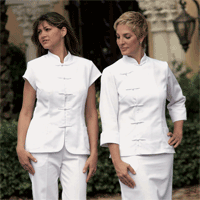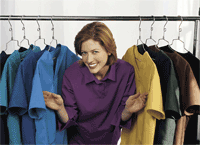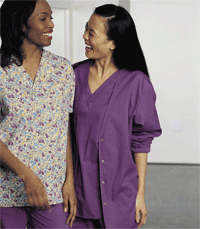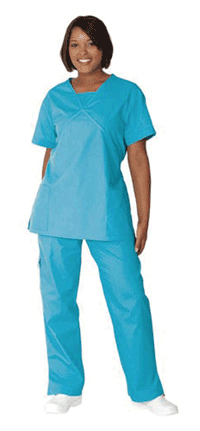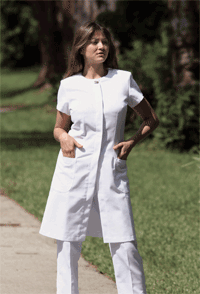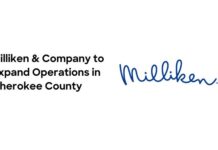|
By Jackie Rosselli Industry Suppliers looking for increased business opportunities need look no further than the healthcare field. Fueled by an aging population and technological advances, this market segment is one of the fastest growing in the U.S. economy. According to a 2004 study released by the Bureau of Labor Statistics (BLS), employment growth yet again will be concentrated in the service-providing sector of the economy, with health services leading the way. Job growth in heath services is expected to outpace other industry divisions by twice the rate of the overall economy. In fact, the BLS projects that nine of the 10 fastest growing occupations for the years 2002-2012 are health or computer related. By 2012, the country will employ an additional 215,000 medical assistants, 31,000 physician assistants, and 69,000 medical records and health information technicians. The 10-year BLS projections of economic growth, employment by industry and occupation, and labor force are widely used in career guidance, planning programs and studying long-range employment trends. And, in the case of the uniform industry, they are used for assessing apparel needs. These figures reflect the 2000 Standard Occupational Classification (SOC) system and the 2002 North American Industry Classification System (NAICS). But while the healthcare field is expanding, its demographics are changing, particularly in the nursing profession. In 1990, the first accelerated class at the Johns Hopkins University School of Nursing had just 15 students, with only one male and one ethnic minority. The latest class has 127 students and represents the changing face of nursing today: more male students (11%), more minority students (20%) and more students with other professional experiences (15%). In addition, the well-documented shortage of qualified nurses may only worsen, again due to demographics. Nationally, half of all nurses working today were born during the baby boom years. What will happen as they near traditional retirement age? To prevent a mass exodus, industry leaders are looking for innovative ways to keep experienced nurses contributing well past age 65. Congress, too, has introduced the Nurse Retirement Act, legislation designed to address the nations nursing shortage. Of course, the aforementioned shifts and growth will mean new challenges to the makers of healthcare apparel. How will this affect the types of garments manufactured? Whats going on in healthcare apparel today, and what trends can we expect in the future? For some insight, Made to Measure turned to two industry suppliers: Crest Uniforms, an Aramark Company, that supplies traditional health apparel to the nations retailers, cataloguers and hospital groups; and Soleil Uniforms, a manufacturer of wear for health services hottest sub-segment the medical spa industry. Todays healthcare providers, from the nurse charged with patient care to the medical records employee to the person taking patients blood pressure, all have one thing in common when buying uniforms a desire for fashion. She wants trend and wants to look good on the job, says Lisa Waugh, product manager at Crest Uniforms. But like everything else now, she wants value and doesnt want to spend a lot of money. Waugh says that even though the typical nurse may be older, as BLS statistics suggest, the Crest customer still wants style. Forty-three is not what it used to be, notes Waugh. Shes not your mother her wants and needs are different. It is those needs that are the driving force behind todays health services styling options. Healthcare apparel suppliers, like the uniform industry in general, are taking their cue from whats going on in mainstream fashion. Right now, one of the biggest demands we have is for a flare leg on our pants, says Waugh. Flare pants are in because they can be worn by everyone theyre flattering to most figures, look great and mimic what is worn outside of the work environment. And while solids reign supreme in bottom pieces 75-80% of said garments utilize just one shade color plays an important role in healthcare apparel. Color is a mood-setter, says Waugh. People crave whats hot, and this is an industry which likes to express its individuality. Whats the most popular color? While there is no lack of color or experimentation (pink sorbet was a hot seller for Crest), one color leads the rest. Its always some shade of blue, Waugh says. Its a calming and tranquil color, which is important in this business. The trick, however, is to come up with a new twist on an old standard. Its always an out with the old, in with the new blue, she says. The Crest line for 2005 will feature scrubs and bottom pieces colored in a Curacao Blue, named after the Caribbean island. Think vibrant, yet soothing and calming, says Waugh. Other colors expected to make a splash include Gum Drop Green and Creamsicle. We call these our yummy colors, she adds. But not all in the profession have embraced the rainbow of colors that is currently available. Concerns over patient confusion has spawned a small movement back to one-color nursing uniforms in some parts of the country. What nurses wear has become a hot issue over the last couple of years as hospitals in Georgia, Texas, Illinois and other states have started to ditch the colored and decorated scrub bottoms and tops to return to a white uniform. Ever since shedding the white, patients have complained that nurses are unrecognizable, says Diana Mason, editor of American Journal of Nursing, the official journal of the American Nurses Association. If everyone is wearing scrubs, how do you know who your nurse is? she notes. While this may be a trend in the making, there has been no industry-wide call for a return to the crisp, pristine uniforms of the past. I just havent seen it yet, says Waugh. It would be absolutely ridiculous, says Valerie Johnson, a registered nurse at St. Josephs Health Center in Kansas City. Who would clean them? A better way to readily identify nurses may come from an exhibit at the Fabric Workshop and Museum in Philadelphia. The museum surveyed 800 nursing students and working nurses to create an ideal uniform. There was little consensus, except for one item a patch. The exhibits creators designed an RN patch red letters embroidered on a white background. Now, the American Journal of Nursing has begun campaigning for uniform makers to make the patches available on uniforms they sell to nurses. We believe this could be a simple yet elegant solution to nursings identity crisis, says Mason. Opportunity also abounds in another health-related field the medical spa industry. The International Medical Spa Association defines a medical spa as a facility that operates under the full-time, on-site supervision of a licensed health care professional. The facility operates within the scope of practice of its staff, and offers traditional, complementary and alternative health practices and treatments in a spa-like setting. Practitioners working within a medical spa will be governed by their appropriate licensing board, if licensure is required. In the United States alone, spas are annually a $10.7 billion industry. In the last five years, medspas, as they are commonly known, have grown 133%, the highest growth rate of any spa type. Los Angeles and Miami, with their high concentrations of physicians, dermatologists and plastic surgeons, represent the top U.S. markets, with New York City coming in third. California has 16,900 medical spa-related personnel and has the highest concentration of plastic surgeons and dermatologists in the United States. What has fueled the growth? Dr. Robert Keller, medical director of the Pebble Beach Skin Institute in California, cites four factors behind the rise of the medspa. One is the alternative-medicine movement, which took root because it encourages people to take charge of their own health, says Keller. The second is the fact that we have the physical structure of spas in place, which is where people go to have a massage, facial or body treatment of some kind. Third, we have the technology to perform many procedures outside of a hospital setting. And finally, we have aging baby boomers who make up more than 51% of the population and will see the largest transference of wealth in the history of the world as their parents pass away. It is boomers, according to the Medical Spa Association, who have really spawned the medical spa business. With their voracious appetite to stop the aging process and look great, boomers, as former hippies, also want a sense of high touch and are willing and have the means to pay for it. Because competition is fierce in the medical spa industry, doctors are adding an air of upscale sophistication to work environments as a means to gain and retain their affluent patients. Most offices are devoid of the so-called yummy colors and outlandish patterns that dominate the traditional healthcare field. Rather, uniforms have a more subtle, upscale appearance and are often colored in white, according to Ellen Rowley, marketing director at Soleil Uniforms. We distinguish ourselves from the traditional uniform industry by manufacturing designer styled, high-end uniforms that withstand the rigors of a demanding work environment, Rowley notes. Some of the more popular items in Soleils new line include a lab coat/dress with a jewel neckline and generous pockets. The piece has a stylish top button and seven concealed buttons and is stain resistant and machine washable. An Asian-inspired Tokyo jacket with three-quarter length kimono sleeves provides the wearer with a relaxed fit and tie closure. Each of these can be worn with a capri pant, long pant or pull-on skirt in a classic fit with elasticized waistband. The types of uniforms provided by a practice sends a message to the patient, says Rowley. You either convey the point that you invest in your patients, that theyre your lifeblood, or you show that you skimp through a cheap, sloppy and unimaginative uniform program. Image may not be everything, but it certainly means a lot in the medical spa industry.
|
|
| Above story first appeared in MADE TO MEASURE Magazine, Spring & Summer 2005 issue. All rights reserved. Photos appear by special permission. | |
| Halper Publishing Company 633 Skokie Blvd, #490 Northbrook, IL 60062 (847) 780-2900 Fax (224) 406-8850 [email protected] |
|




